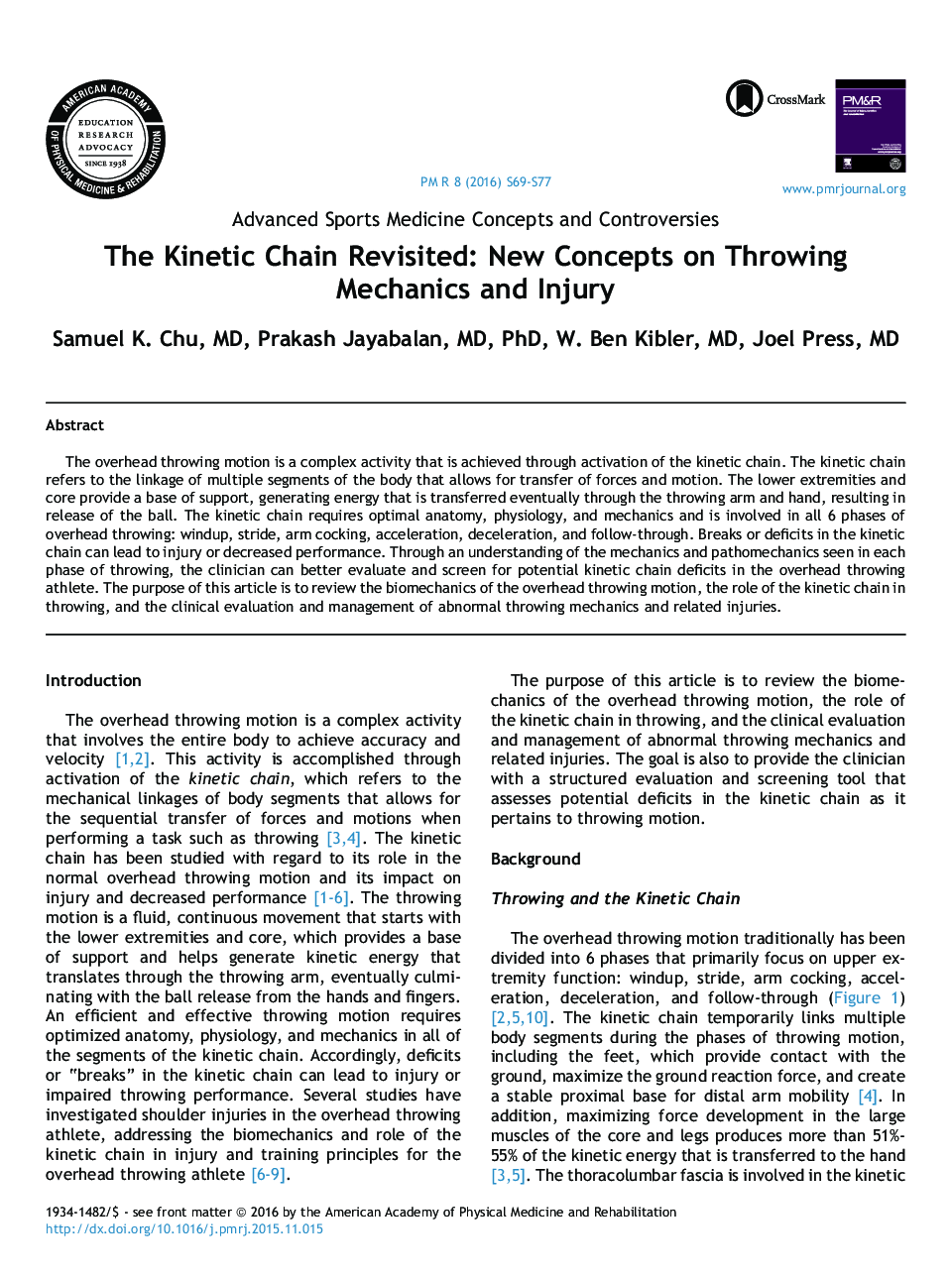| Article ID | Journal | Published Year | Pages | File Type |
|---|---|---|---|---|
| 2704963 | PM&R | 2016 | 9 Pages |
The overhead throwing motion is a complex activity that is achieved through activation of the kinetic chain. The kinetic chain refers to the linkage of multiple segments of the body that allows for transfer of forces and motion. The lower extremities and core provide a base of support, generating energy that is transferred eventually through the throwing arm and hand, resulting in release of the ball. The kinetic chain requires optimal anatomy, physiology, and mechanics and is involved in all 6 phases of overhead throwing: windup, stride, arm cocking, acceleration, deceleration, and follow-through. Breaks or deficits in the kinetic chain can lead to injury or decreased performance. Through an understanding of the mechanics and pathomechanics seen in each phase of throwing, the clinician can better evaluate and screen for potential kinetic chain deficits in the overhead throwing athlete. The purpose of this article is to review the biomechanics of the overhead throwing motion, the role of the kinetic chain in throwing, and the clinical evaluation and management of abnormal throwing mechanics and related injuries.
